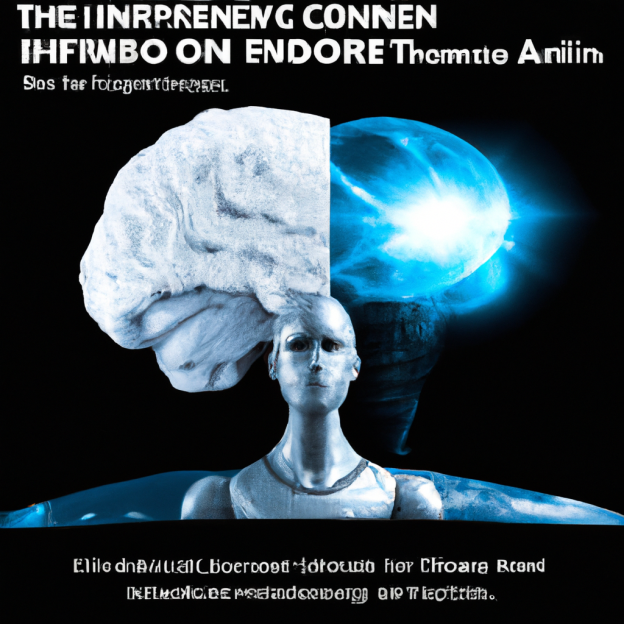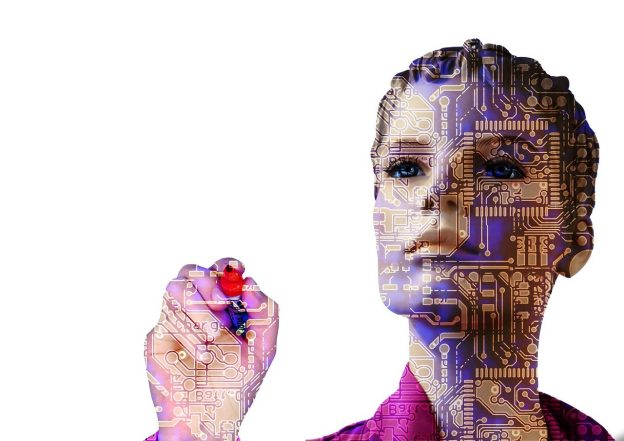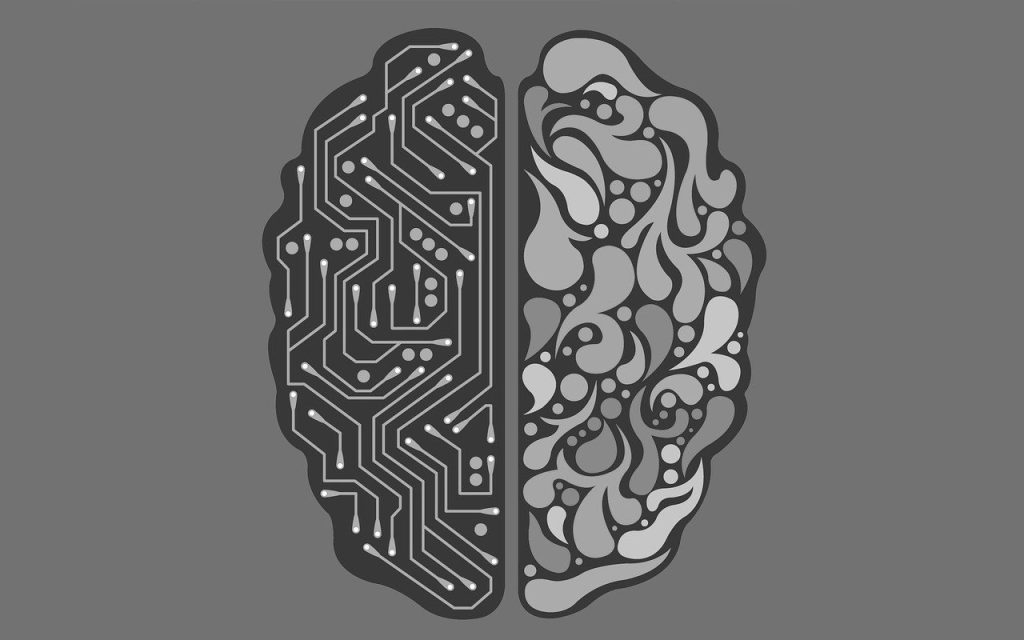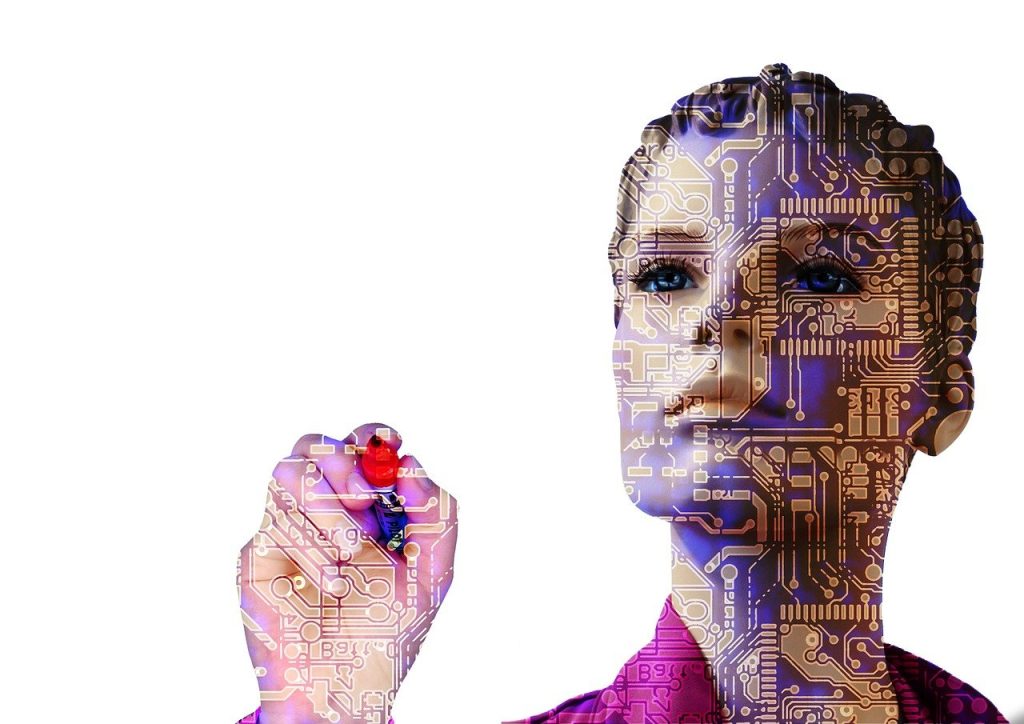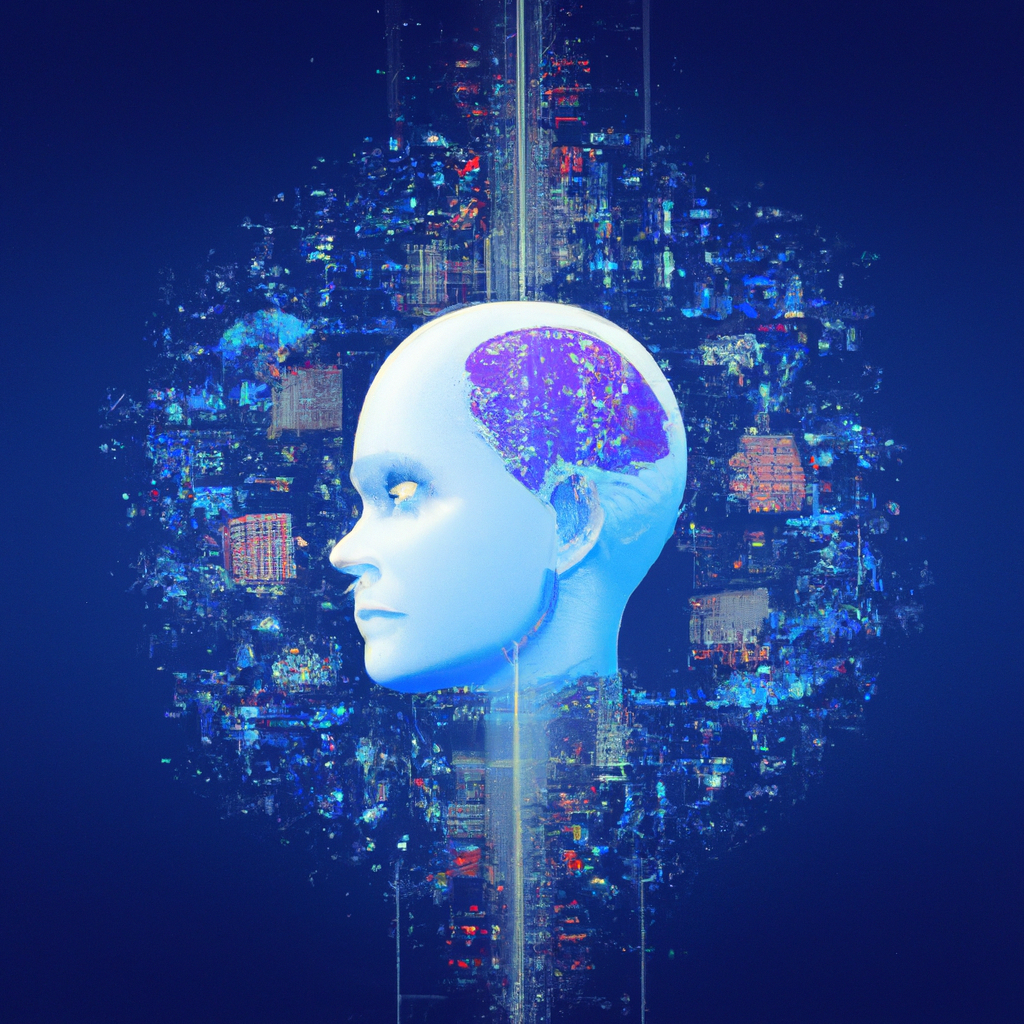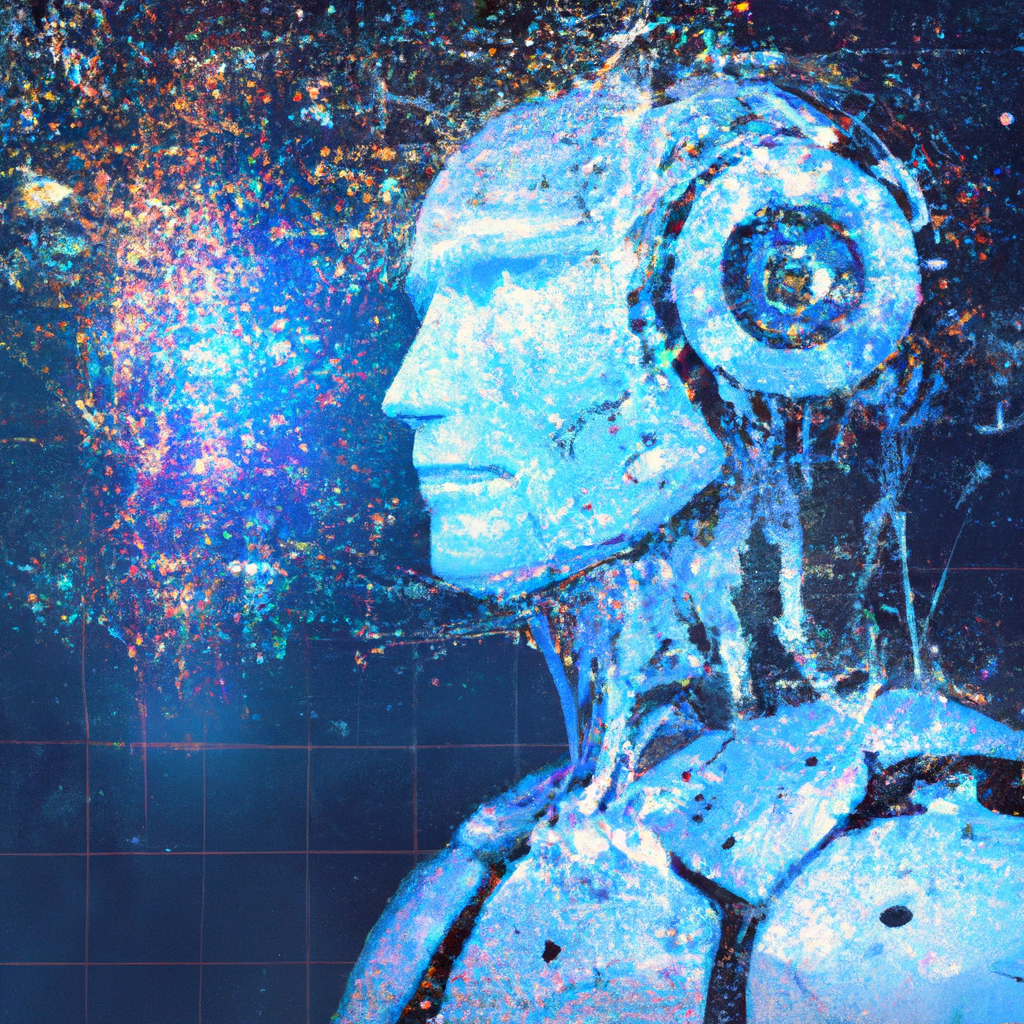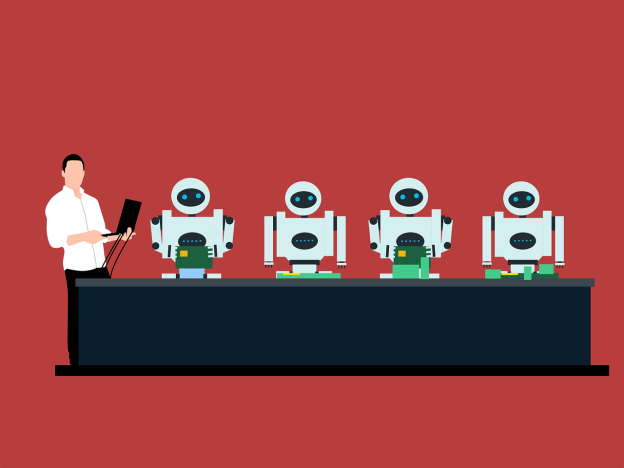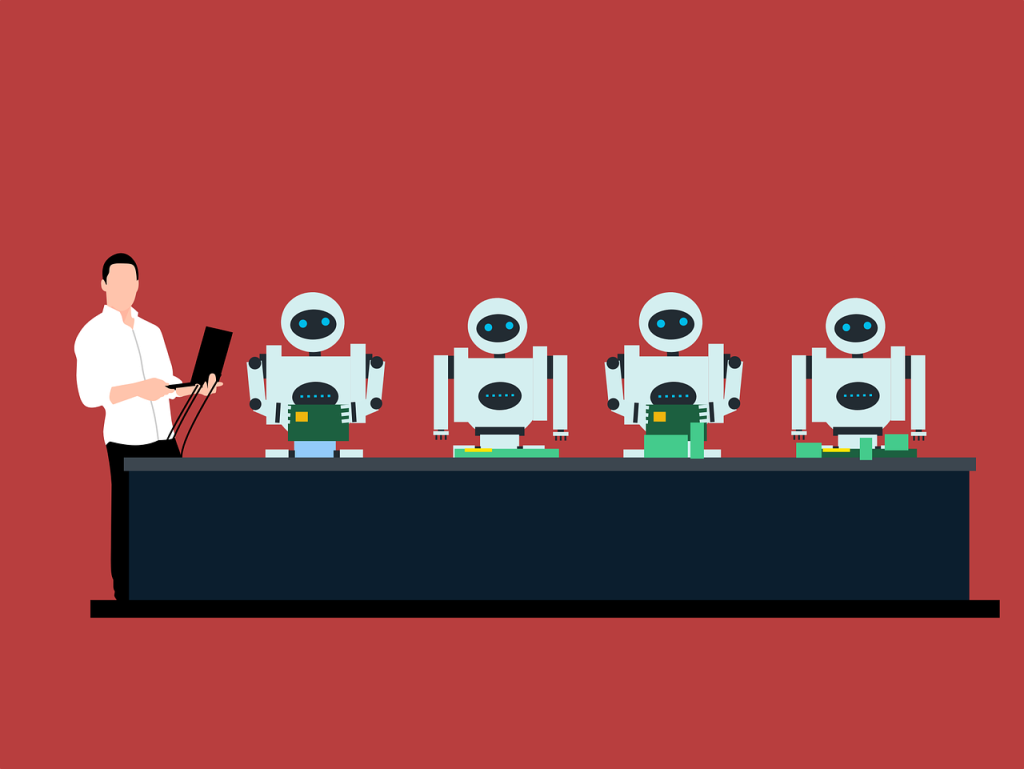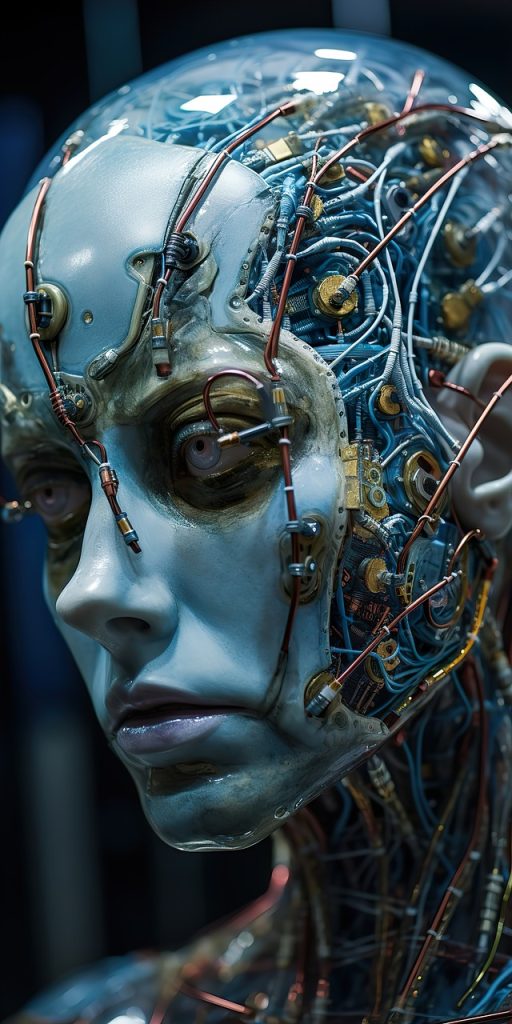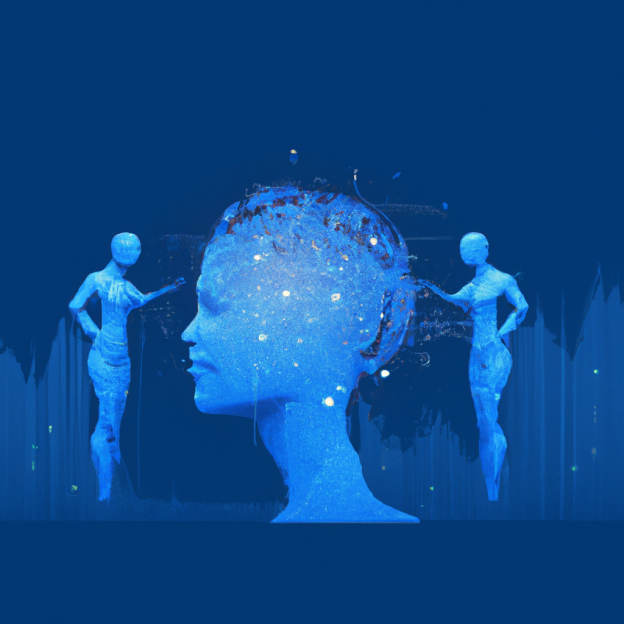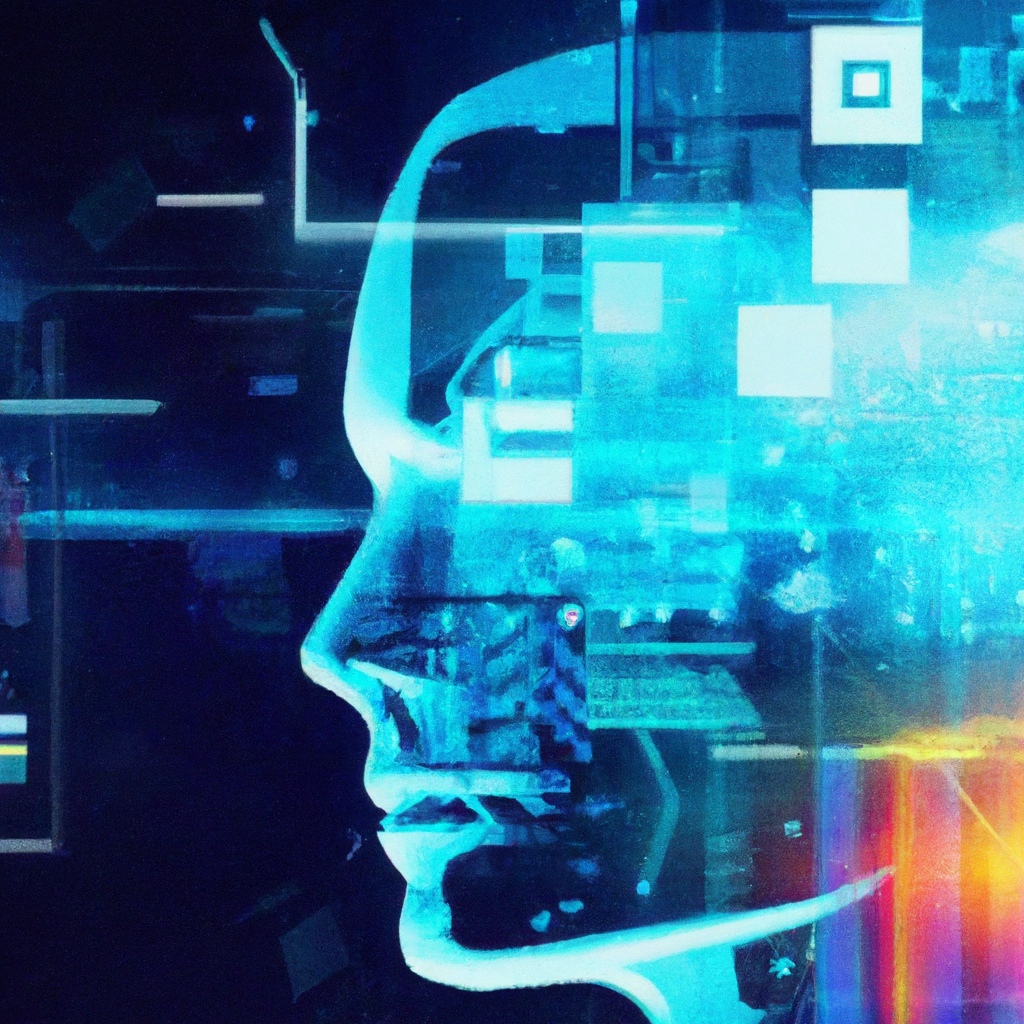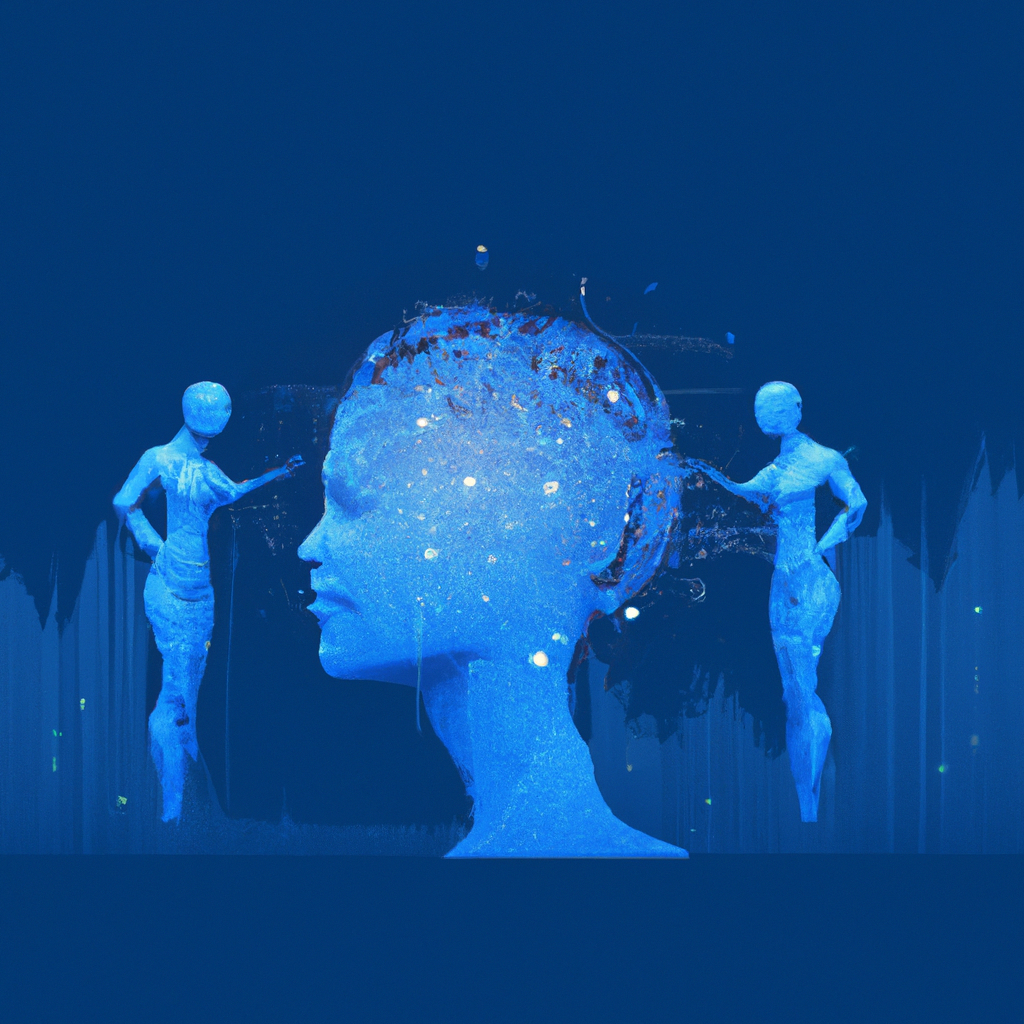Artificial Intelligence (AI) has increasingly become a prominent force in our world, revolutionizing various industries and transforming the way we live and work. In this article, we explore four remarkable examples that demonstrate the immense power of AI. From self-driving cars navigating the streets with uncanny precision to AI-powered robots mimicking human emotions, these examples showcase the incredible potential of AI and how it is shaping our future. Join us as we delve into the awe-inspiring capabilities of AI and witness its profound impact on our society.
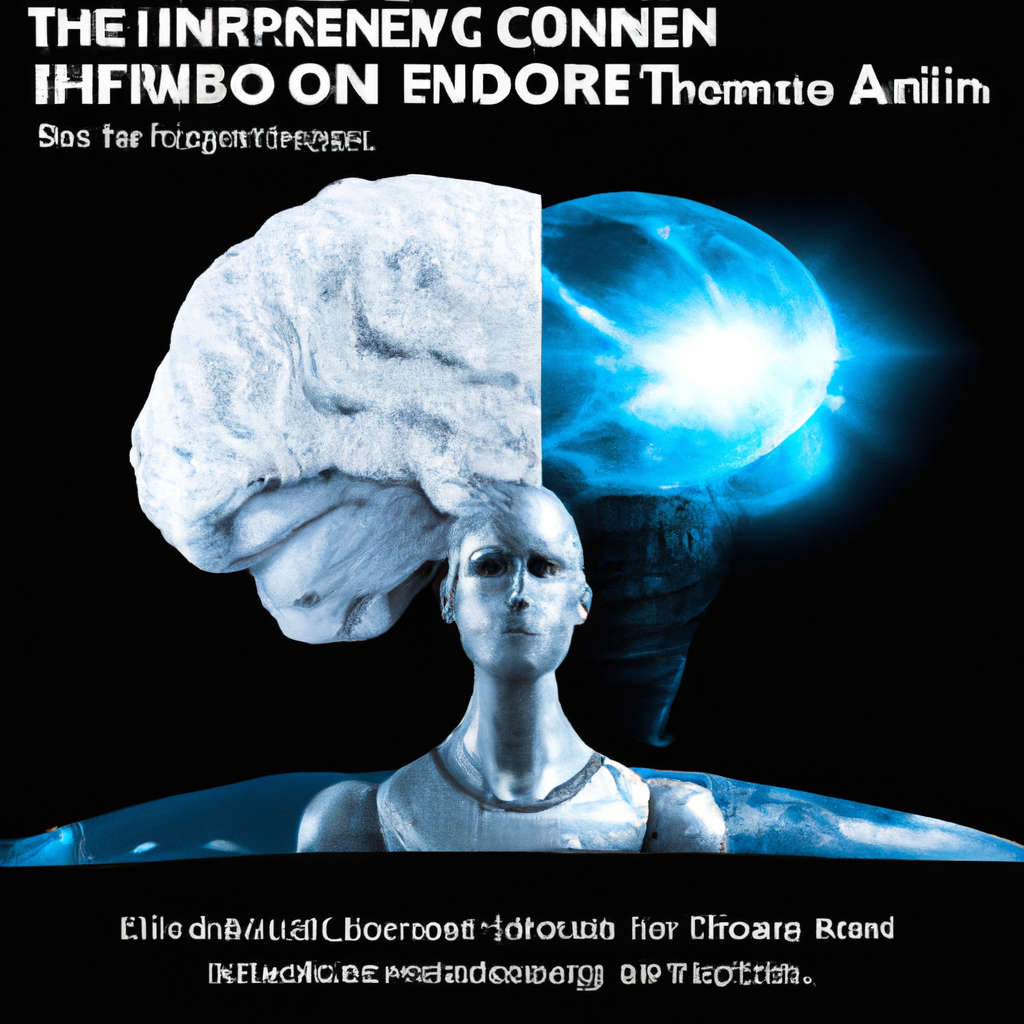
1. Autonomous Vehicles
Autonomous vehicles, also known as self-driving cars, are one of the most prominent advancements in artificial intelligence. These vehicles are capable of sensing their environment and navigating without human intervention. Self-driving cars use a combination of technologies such as sensors, cameras, and advanced algorithms to analyze the surroundings and make decisions in real-time.
Automated trucks are another application of AI in the transportation industry. These trucks are equipped with advanced AI systems that can control acceleration, braking, and steering, making the transportation of goods more efficient and safer.
Drones, which are unmanned aerial vehicles, also utilize artificial intelligence for autonomous flight. These autonomous drones are used in various industries such as agriculture, surveillance, and package delivery. AI-powered drones can navigate through complex environments, avoid obstacles, and perform tasks with precision.
Lastly, unmanned underwater vehicles (UUVs) employ artificial intelligence for underwater exploration and surveillance. These vehicles are capable of collecting data from the ocean depths, performing underwater inspections, and mapping underwater terrains. AI algorithms enable UUVs to navigate through underwater areas autonomously and make real-time decisions.
2. Natural Language Processing
Natural Language Processing (NLP) is a branch of artificial intelligence that focuses on the interaction between computers and human language. NLP enables machines to understand, interpret, and respond to human language in a meaningful way.
Voice assistants, such as Siri, Alexa, and Google Assistant, are powerful examples of NLP in action. These assistants utilize NLP algorithms to understand spoken commands and perform tasks like setting reminders, answering questions, and controlling smart home devices.
Language translation is another application of NLP that has revolutionized communication across different languages. AI-powered translation systems can accurately translate text or speech from one language to another, breaking down language barriers and enabling seamless communication globally.
Sentiment analysis using NLP allows machines to analyze and interpret human emotions from text data. This technology is widely used in social media monitoring, customer feedback analysis, and market research. By understanding human sentiment, businesses can make data-driven decisions and provide personalized experiences.
Chatbots, powered by NLP, are virtual assistants that can respond to user queries and provide relevant information. These chatbots simulate human conversation and are used in customer support, virtual assistants, and automated customer service systems.
3. Healthcare
Artificial intelligence has made significant strides in the healthcare industry, transforming various aspects of patient care, diagnostics, and drug discovery.
Medical diagnostics powered by AI enable more accurate and efficient diagnoses. AI algorithms can analyze medical images, such as X-rays and MRI scans, to detect early signs of diseases like cancer. This technology can assist healthcare professionals in making informed decisions and improve patient outcomes.
Drug discovery is a time-consuming and complex process. However, AI has the potential to revolutionize this field by accelerating the identification and development of new drugs. Machine learning algorithms can analyze vast amounts of data, including genetic information and clinical trials, to identify potential drug candidates and predict their efficacy.
Virtual nursing assistants are AI-powered systems that provide support and medical information to patients remotely. These assistants can monitor patient vital signs, provide medication reminders, and offer personalized healthcare advice. Virtual nursing assistants help in improving patient engagement, reducing hospital readmissions, and enhancing overall healthcare delivery.
Monitoring and predictive analytics aided by AI can help identify early warning signs and predict patient outcomes. By analyzing patient data, AI algorithms can identify patterns and trends, enabling healthcare professionals to intervene proactively and provide personalized care plans.
4. Financial Services
Artificial intelligence has revolutionized the financial services industry, enabling greater efficiency, improved customer experiences, and enhanced security.
Fraud detection using AI algorithms can analyze large volumes of financial data and identify suspicious activities. By detecting fraudulent transactions in real-time, financial institutions can prevent monetary losses and protect their customers.
Algorithmic trading utilizes AI to make automated investment decisions based on predefined strategies. These algorithms can analyze market data, identify patterns, and execute trades with minimal human intervention. Algorithmic trading has the potential to increase trading efficiency and profitability while reducing market volatility.
Customer service in the financial services industry has also been enhanced by AI. Chatbots can provide instantaneous responses to customer inquiries, assist with account management tasks, and even offer financial advice. By automating routine customer interactions, financial institutions can provide round-the-clock support and improve customer satisfaction.
Credit scoring is another area where AI has had a significant impact in financial services. AI-powered credit scoring algorithms can analyze various data points to assess creditworthiness accurately. By analyzing factors such as payment history, income, and employment stability, these algorithms can provide more accurate and fair credit assessments.
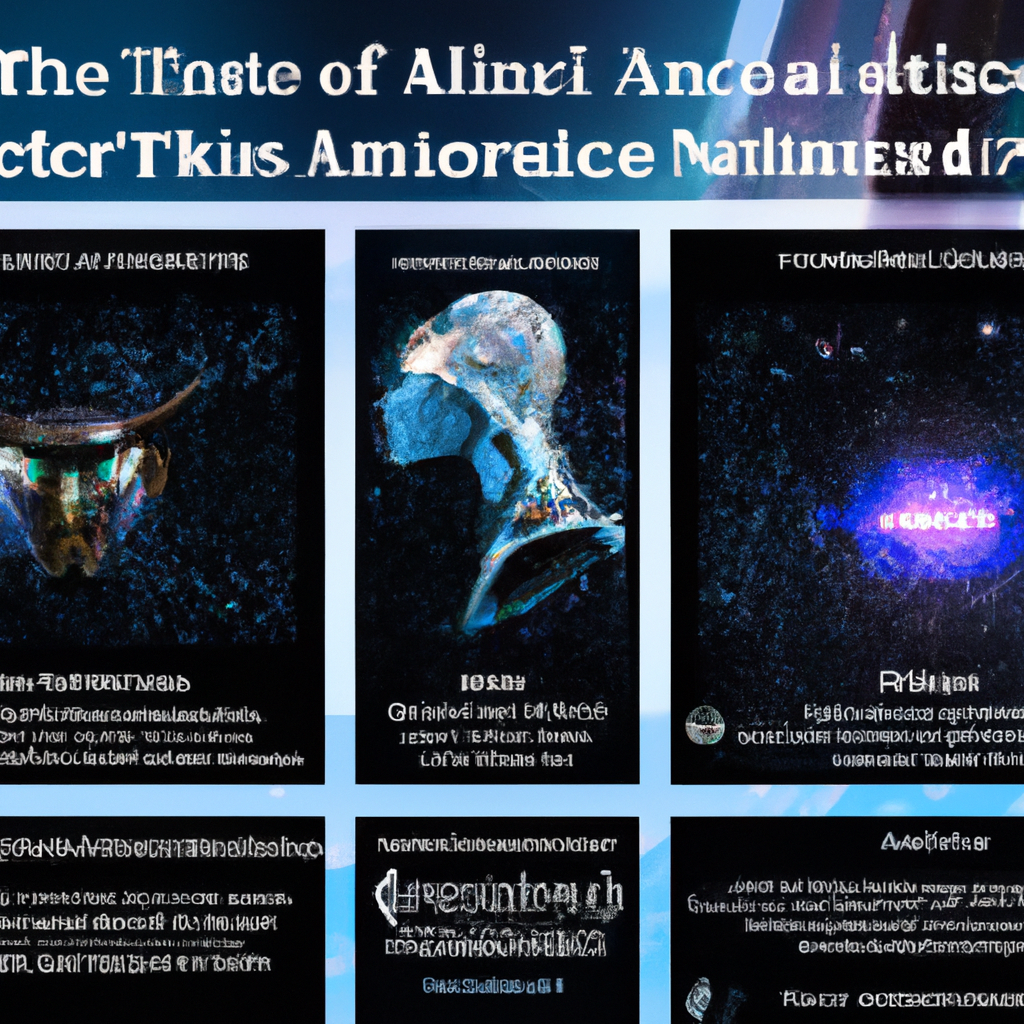
5. Robotics
Artificial intelligence has propelled the field of robotics, enabling robots to perform complex tasks, interact with their environment, and assist humans in various domains.
Industrial automation has revolutionized manufacturing processes with robotic systems capable of performing repetitive tasks with high precision and efficiency. These robots can handle hazardous materials, assemble products, and optimize production lines, leading to increased productivity and reduced costs.
Surgical robots, powered by AI, offer surgeons greater precision, control, and visualization during complex surgeries. These robots can perform minimally invasive procedures, reducing the risks associated with traditional surgery. Surgical robots have the potential to enhance patient outcomes, shorten recovery times, and enable more precise surgical interventions.
Companion robots are designed to provide emotional support, companionship, and assistance to individuals in need. These robots can engage in conversations, recognize emotions, and offer personalized support. Companion robots play a critical role in eldercare and mental health support, particularly in situations where human support may be limited.
Assisting tasks in personal and professional environments, AI-powered robots have become valuable assistants for everyday tasks. These robots can perform household chores, fetch objects, and even operate in complex environments such as warehouses. By automating routine tasks, these robots free up human resources and enhance efficiency.
6. Image and Speech Recognition
Image and speech recognition are powerful applications of artificial intelligence that have transformed various industries and improved human-machine interactions.
Facial recognition technology employs AI algorithms to analyze and identify individuals based on their facial features. This technology has been widely used in security systems, law enforcement, and digital authentication. Facial recognition has the potential to enhance security measures while simplifying access control processes.
Object recognition using AI enables machines to identify and classify objects within images or videos. This technology has applications in autonomous vehicles, surveillance systems, and quality control processes. By accurately identifying objects, machines can make informed decisions and perform specific tasks more efficiently.
Emotion recognition is a growing field where AI algorithms analyze facial expressions, vocal patterns, and physiological signals to understand human emotions. This technology has potential applications in mental health monitoring, customer sentiment analysis, and personalized marketing. By understanding emotions, businesses can tailor their products and services to meet individual needs and preferences.
Speech recognition technology enables machines to convert spoken language into written text. This technology has been integrated into voice assistants, transcription services, and call center systems. By accurately recognizing and interpreting speech, machines can provide seamless human-machine interactions and enhance accessibility.
7. Energy Management
Artificial intelligence has transformed energy management by optimizing energy consumption, predicting demand, and improving the efficiency of energy systems.
Smart grids utilize AI algorithms to analyze energy consumption patterns and optimize energy distribution. These grids can dynamically balance supply and demand, integrate renewable energy sources, and reduce energy wastage. AI-powered smart grids enable more efficient energy management, lower costs, and increased resilience.
Energy consumption analysis using AI helps identify energy-saving opportunities, monitor consumption patterns, and reduce overall energy usage. By analyzing data from smart meters, sensors, and other sources, AI algorithms can provide actionable insights to individuals and organizations, promoting energy efficiency.
Optimization of energy systems with AI allows for the efficient utilization of energy resources and infrastructure. By analyzing data on energy generation, storage, and distribution, AI algorithms can optimize energy flow, reduce losses, and enhance overall system performance. AI-powered optimization helps drive sustainable energy solutions and enhance grid reliability.
Demand forecasting using AI algorithms enables accurate predictions of energy demand based on historical data, weather patterns, and other factors. By forecasting demand, energy providers can optimize resource allocation, plan maintenance activities, and prevent energy shortages. Accurate demand forecasting leads to cost savings and improved reliability in energy supply.
8. Cybersecurity
Artificial intelligence plays a crucial role in cybersecurity, helping to detect threats, authenticate users, secure networks, and identify anomalies.
Threat detection systems powered by AI can analyze vast amounts of data to detect and respond to cyber threats in real-time. By leveraging machine learning algorithms, these systems can identify patterns, anomalies, and malicious activities, enabling proactive defense measures and reducing the risk of cyberattacks.
User authentication using AI algorithms enhances security by verifying users’ identities based on behavioral biometrics, facial recognition, or voice recognition. These authentication methods offer higher levels of security compared to traditional password-based systems and safeguard sensitive information.
Network security is greatly boosted by AI-powered systems that monitor network traffic and detect potential vulnerabilities or attacks. These systems can analyze network behavior, identify suspicious activities, and respond in real-time to mitigate threats. AI-driven network security provides an additional layer of defense against cyber threats.
Anomaly detection using AI algorithms can identify deviations from normal behavior within a system or network. By continuously monitoring patterns and behaviors, AI systems can detect unusual activities that may indicate malware, intrusions, or unauthorized access attempts. Anomaly detection improves overall cybersecurity and helps prevent potential attacks.
9. Gaming
Artificial intelligence has revolutionized the gaming industry, enhancing non-player characters, generating procedural content, testing games intelligently, and developing game strategies.
Non-player characters (NPCs) driven by AI algorithms can exhibit realistic behavior, respond to player actions, and provide immersive gaming experiences. NPCs can have complex decision-making capabilities, adapt to changing game environments, and simulate intelligent opponents or allies.
Procedural content generation (PCG) using AI enables the automatic creation of game content such as maps, levels, and quests. By leveraging algorithms, PCG generates unique and dynamic game content, increasing replayability and reducing development time. PCG allows game developers to create vast, diverse, and unpredictable game worlds.
Intelligent game testing using AI algorithms can automate the testing process, identify bugs, and provide valuable feedback to developers. These algorithms can simulate gameplay scenarios, perform stress testing, and identify potential issues before the game’s release. Intelligent game testing improves game quality and reduces time and resources spent on manual testing.
Game strategy development is enhanced by AI algorithms that can analyze game mechanics, simulate multiple scenarios, and generate optimal strategies. By leveraging machine learning techniques, AI systems can develop adaptive and challenging opponents, improving overall gameplay and providing more engaging experiences.
10. Agriculture
Artificial intelligence has made significant contributions to the agricultural sector, helping with crop monitoring, pest control, precision farming, and harvesting robots.
Crop monitoring using AI-powered systems enables farmers to collect and analyze data on crop health, plant growth, and nutrient levels. By analyzing satellite images, aerial data, and IoT sensors, AI algorithms can provide valuable insights and help farmers optimize irrigation, apply fertilizers efficiently, and detect crop diseases early.
Pest control in agriculture is a critical challenge that AI can address. AI-powered systems can identify and monitor pests, provide early warning systems, and suggest appropriate interventions. By accurately detecting pests, farmers can implement targeted and eco-friendly pest control strategies, reducing the use of harmful pesticides.
Precision farming leverages AI algorithms to optimize agricultural practices by considering factors such as weather conditions, soil data, and crop health. AI systems can provide recommendations for planting, irrigation, and fertilization based on real-time data, enabling efficient resource utilization and improving crop yields.
Harvesting robots are AI-powered machines that can autonomously harvest crops. These robots can identify ripe produce, navigate through crop fields, and perform harvesting tasks with precision. Harvesting robots reduce labor costs, increase harvesting efficiency, and ensure timely harvesting, even in challenging conditions.
In conclusion, artificial intelligence has brought forth remarkable examples in various fields, revolutionizing industries, improving efficiency, and enhancing human-machine interactions. From autonomous vehicles and natural language processing to healthcare and agriculture, AI continues to shape our world and pave the way for a more intelligent future.
